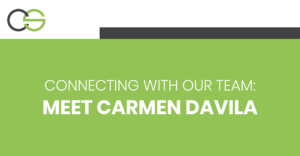A thorough, well-written job description is an important part of recruiting the most qualified candidates to your company. It can also be a valuable internal tool, when used to support performance evaluations, training processes, salary levels, reasonable accommodation guidelines, and legal compliance.
In a 2020 survey by Indeed, 52% of job seekers responded that the quality of a job description was a very or extremely significant factor when deciding which jobs to apply to. A good job description clearly explains the essential responsibilities, functions, qualifications, required skills, and salary range of that position, along with information about the company, including its mission, culture, and employee benefits.
The criteria you include should help candidates to determine not only if they’re qualified for the position, but also if the company is a good fit for them. To write better, more effective job descriptions, follow the top 10 keys explained below.
1. Use targeted, searchable job titles
According to Indeed’s recent survey, 36% of job hunters search for roles using the title of the position they seek. So, the more precise and descriptive your job title, the more effective it will be. Make sure to include keywords that are likely to be searched for in online job websites by a majority of candidates, using common, industry-standard terminology and experience levels rather than confusing jargon and internal references.
2. Start with a compelling summary
Grab job-seekers’ attention with a brief overview that summarizes the role, its primary responsibilities, and overall job objectives. Create excitement by focusing on the best parts of the job, especially growth opportunities and the potential for advancement. Including the position’s exact location here can be important for improving performance in online search results. Keep it concise: this section should be no more than four sentences.
3. Essential duties and daily activities
Detail the primary, required job functions concisely in five to seven bullets, including how tasks must be performed and their frequency. Briefly highlight day-to-day activities of the position,emphasizing any duties that are unique to your company. (See the next tip for more on inclusion and accessibility standards.)
In addition, specify whether the role is full or part time, state the expected work days, hours and shifts, and if overtime is standard. List all physical demands, such as bending, lifting (up to how many pounds?), driving, sitting, etc., as well as the working conditions, including noise level, indoor/outdoor activities, temperatures, and other environmental factors that may affect job performance.
If applicable, provide the expected percentage of travel or driving time, typical destinations, and length of trips (daytime only, overnight, multiple nights, etc.).
4. ADA compliance and accommodations
In order to be inclusive and nondiscriminatory under state and federal laws, it is important to accurately document all essential responsibilities, requirements, and physical and mental demands of the role.
Consider whether each function is required by all employees that share the same position, and if the job would change substantially without it. Additional factors include:
- Amount of time spent on that duty.
- If task is directly related to the job’s primary purpose.
- Activities requiring specialized expertise or skills.
- Can this task be handled by another individual or as part of a different position?
- Might this duty be performed with reasonable accommodations by someone with a physical, mental, or sensory disability?
4. Organizational placement
Specify the title of the supervisor who oversees this position, to give job candidates a sense of how the job fits into the organization. If the available role is managerial, indicate what level and how many direct reports they will be responsible for.
5. Eligibility and competency criteria
Clearly communicate both the required and desired background, knowledge, skills and abilities for this position. Is this an entry-level, mid-range, or senior role? How much and what kind of experience qualifies the candidate to apply for the job?
It helps to separate must-haves and pluses into two separate sections. You can also indicate required/preferred education (such as a high school diploma or degree level) plus additional eligibility, like industry certifications, experience working with specific equipment, etc.
6. Culture, benefits, and salary
What makes your company a unique, desirable place to work? Will diverse candidates see themselves fitting into your environment? Describe your organization’s mission, values, and culture in an inclusive way, and highlight any unusual perks, fun events, work schedule flexibility, options to work remotely, PTO policy, office snacks, bonus structure, and tuition reimbursement, along with your basic health benefits and the position’s salary range.
In an Indeed survey, 72% of job seekers said that details about company culture in job descriptions was extremely or very important, and 83% said that benefits and perks play a large role in deciding whether to accept a job offer.
8. The fine print
If applicable, remember to address the following legal concerns:
- Fair Labor Standards Act (FLSA) Job Classification: indicate if the position is exempt or nonexempt.
- Affirmative Action Plan and/or Equal Employment Opportunity (AAP/EEO) statement relevant to federal contractor diversity requirements.
- Include a disclaimer that the job description is not limited to only the required activities or responsibilities listed; assignments may change or expand at any time with or without notice.
Job descriptions should become part of each employee’s file. Ideally, the employee should be asked to sign their job description each year, with appropriate changes made to reflect their changing role.
9. Scrub out gender bias and excessive language
Research published in the American Psychological Association’s The Journal of Social Psychology, and reported in Wired magazine, found that certain words in job ads skew towards either gender, with an overwhelming male bias.
Review your job descriptions for such masculine phrasing as “aggressive/assertive,” “ambitious leader,” or “highly competitive environment,” and feminine terms like “nurture,” “connect,” “understand,” or “supportive” and replace them with neutral wording. Choose phrases like “go-getter,” “exceptional talent,” “motivated team player,” or “provide great customer service.”
According to a ZipRecruiter study, the use of this kind of gender-neutral language appeals to a more diverse applicant pool and can help recruiters speed up the hiring process.
10. Keep job descriptions consistent
All job descriptions within your organization should be standardized with the same layout and formatting. Once finalized, store and back them up securely. Besides external and internal job postings, descriptions may also be used for accommodation requests, compensation reviews, and performance appraisals.
Need a hand developing or updating job descriptions?
The expert team at Connect Staffing is always available to assist our clients with job description guidance and writing. Call or text us at (714) 622-4494 to speak with one of our experienced recruiters.





